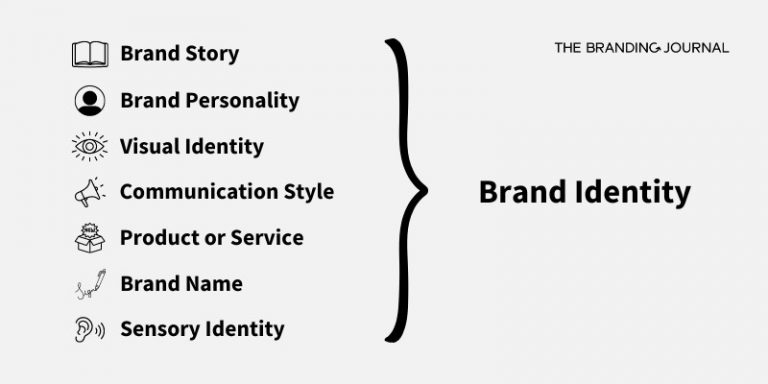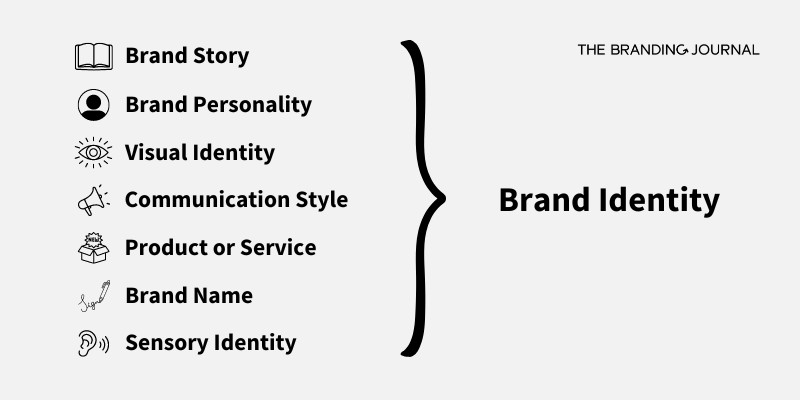Chia seeds have taken the health world by storm, and for good reason. These tiny seeds are packed with nutrients and can be easily incorporated into various recipes, especially smoothies. With origins dating back to ancient civilizations, chia seeds have always been revered for their health benefits, making them a perfect addition to your daily blend.
The nutritional profile of chia seeds includes essential fatty acids, high fiber content, and a solid amount of protein, which all contribute to enhanced well-being. When added to smoothies, chia seeds not only improve texture but also provide sustained energy, support hydration, and promote digestive health.
Introduction to Chia Seeds
Chia seeds, small yet mighty, have a rich history that dates back to ancient civilizations. Originally cultivated by the Aztecs and Mayans, these tiny seeds were revered not only for their nutritional benefits but also as a source of energy and strength in battle. Today, chia seeds are enjoyed worldwide for their versatility, nutrients, and health benefits, making them a key ingredient in many diets.Chia seeds are packed with essential nutrients, making them a powerhouse of health.
They are an excellent source of omega-3 fatty acids, fiber, protein, and various minerals like calcium, phosphorus, and magnesium. Just a two-tablespoon serving contains approximately 140 calories, 11 grams of fiber, and 4 grams of protein. This impressive nutritional profile contributes to their reputation as a “superfood,” promoting heart health, digestion, and overall wellness.
Origins and Nutritional Benefits
The origins of chia seeds can be traced back to the ancient Mesoamerican cultures, where they played a crucial role in the diet of various peoples, including the Aztecs and Mayans. They were not only consumed as food but also used in religious rituals and medicine. Today, chia seeds are cultivated primarily in countries like Mexico, Bolivia, and Argentina, where the climate is favorable.The nutritional profile of chia seeds includes an abundance of important nutrients that contribute to a balanced diet:
- Omega-3 Fatty Acids: Chia seeds are one of the richest plant-based sources of omega-3 fatty acids, particularly alpha-linolenic acid (ALA), which supports heart health.
- Fiber: With a high fiber content, chia seeds aid in digestion and help maintain a feeling of fullness, which can be beneficial for weight management.
- Protein: They provide a complete protein source, containing all nine essential amino acids, making them an ideal addition for vegetarians and vegans.
- Vitamins and Minerals: Chia seeds are rich in calcium, magnesium, and phosphorus, essential for bone health and overall metabolic function.
Versatility in Recipes
Chia seeds are incredibly versatile, making them a popular ingredient in various recipes. Their ability to absorb liquid—up to 12 times their weight—allows them to be used in a multitude of dishes, enhancing both texture and nutritional value. They can be incorporated into smoothies, puddings, baked goods, and even savory dishes. Here are a few creative ways to include chia seeds in your diet:
- Smoothies: Chia seeds can be blended into smoothies for an added nutritional boost and a creamy texture.
- Chia Pudding: Soaking chia seeds in milk or a milk alternative overnight creates a delicious pudding that can be topped with fruits and nuts.
- Baked Goods: Chia seeds can be added to muffins, breads, and pancakes, contributing to a more nutritious breakfast option.
- Salads: Chia seeds can be sprinkled on salads for a delightful crunch and an extra dose of omega-3s.
Nutritional Benefits of Chia Seeds
Chia seeds are not just a trendy superfood; they pack a powerful nutritional punch that can enhance any smoothie. Understanding the key nutritional benefits of these tiny seeds can help you make informed choices for your health and wellness.
Essential Fatty Acids in Chia Seeds
Chia seeds are an excellent source of omega-3 fatty acids, particularly alpha-linolenic acid (ALA), which is crucial for heart health. These essential fatty acids contribute to reducing inflammation, supporting brain function, and promoting overall cardiovascular health. A mere 28 grams (about two tablespoons) of chia seeds can provide approximately 5 grams of omega-3s, which is significant considering the daily recommended intake.
Including chia seeds in your smoothies can help you meet your omega-3 requirements effectively.
Fiber Content and Digestive Health
Chia seeds are remarkably high in dietary fiber, boasting around 11 grams per ounce. This fiber is primarily soluble, which means it absorbs water and forms a gel-like consistency in the digestive tract. This property aids in promoting feelings of fullness, assisting in weight management, and preventing overeating. Additionally, the fiber content supports healthy digestion by acting as a prebiotic, which nourishes the beneficial bacteria in the gut.
Regular consumption of chia seeds can lead to improved bowel regularity and overall digestive health, making them a perfect addition to your smoothies.
Protein Content and Muscle Repair
Chia seeds provide a notable amount of protein, with about 4 grams of protein per two tablespoons. This protein is plant-based and contains a complete amino acid profile, making it a valuable source for muscle repair and recovery, particularly for those following vegetarian or vegan diets. The inclusion of chia seeds in smoothies not only enhances the protein content but also helps support muscle growth and repair post workout.
For individuals engaging in regular physical activity, this protein boost can facilitate recovery and contribute to overall fitness goals.
Health Benefits in Smoothies
Chia seeds are a fantastic addition to smoothies, not just for their nutritional value but also for the distinct benefits they bring in terms of texture, energy, and hydration. When blended into your favorite smoothie recipes, chia seeds can transform an ordinary drink into a powerful health boost.Chia seeds enhance the texture and consistency of smoothies by absorbing liquid and expanding to form a gel-like substance.
This thickening effect not only improves the mouthfeel of your smoothie but also makes it more satiating. The unique ability of chia seeds to absorb up to 12 times their weight in water means that you can enjoy a creamy, rich texture without adding excessive calories or fat.
Role in Sustained Energy Levels
Incorporating chia seeds into your smoothie can provide a steady release of energy, making them an ideal choice for breakfast or a pre-workout snack. Their combination of carbohydrates, fiber, and protein helps maintain blood sugar levels, preventing the rapid spikes and crashes often associated with sugary drinks.
- Chia seeds contain complex carbohydrates that break down slowly, providing lasting energy without the sugar crash.
- The fiber content aids in digestion and promotes a feeling of fullness, which can help control appetite throughout the day.
- A serving of chia seeds (about two tablespoons) delivers approximately 10 grams of protein, further stabilizing energy levels.
“Chia seeds are a powerhouse of sustained energy, making them perfect for anyone looking to maintain optimal performance throughout the day.”
Benefits for Hydration and Electrolyte Balance
Chia seeds are also known for their remarkable ability to support hydration and maintain electrolyte balance, especially important during workouts or hot weather. When blended into a smoothie, chia seeds can help keep you hydrated thanks to their high water absorption capacity.
- The gel formed by chia seeds can help retain moisture in the body, preventing dehydration during physical activities.
- Chia seeds are rich in essential minerals like potassium, magnesium, and calcium, which are vital for maintaining electrolyte balance.
- Including chia seeds in your smoothies can enhance overall hydration, particularly when combined with water-rich fruits like watermelon or cucumber.
“For optimal hydration, chia seeds act as a natural reservoir, ensuring your body maintains a healthy fluid balance.”
Ways to Incorporate Chia Seeds into Smoothies
Chia seeds are versatile and can easily be added to your smoothies for an extra nutritional boost. They not only enhance the texture but also provide numerous health benefits. Incorporating chia seeds into your smoothies is a fantastic way to enjoy their unique properties while savoring delicious flavors.Including chia seeds in your smoothies can help improve the overall nutritional profile.
Here are some delightful smoothie recipes featuring chia seeds, a step-by-step guide to preparing a chia seed smoothie, and tips to balance flavors effectively.
Smoothie Recipes with Chia Seeds
These recipes demonstrate how to blend chia seeds with various ingredients for delicious and nutritious smoothies. Each recipe can easily be adjusted to suit your taste preferences.
- Berry Chia Smoothie: Blend 1 cup mixed berries, 1 banana, 1 tablespoon chia seeds, 1 cup almond milk, and a drizzle of honey for sweetness.
- Mango Coconut Chia Smoothie: Combine 1 cup mango chunks, 1/2 cup coconut water, 2 tablespoons chia seeds, and a squeeze of lime juice for a tropical feel.
- Green Chia Smoothie: Use 1 cup spinach, 1 banana, 1/2 avocado, 1 tablespoon chia seeds, and 1 cup unsweetened almond milk for a refreshing green boost.
- Peanut Butter Chia Smoothie: Blend 1 banana, 2 tablespoons peanut butter, 1 tablespoon chia seeds, 1 cup oat milk, and a sprinkle of cinnamon for a protein-packed smoothie.
Step-by-Step Guide to Preparing a Chia Seed Smoothie
Making a chia seed smoothie is straightforward. Follow these steps for a perfect blend:
- Gather your ingredients, including fruits, liquids, and chia seeds.
- In a blender, combine all the ingredients starting with the liquids, followed by solid items. This helps in achieving a smoother consistency.
- Add the chia seeds to the blender. If desired, let them soak in the liquid for about 10-15 minutes before blending to enhance their texture.
- Blend on high speed until smooth and creamy. If the mixture is too thick, you can add more liquid to reach your desired consistency.
- Pour the smoothie into a glass and enjoy immediately, or store it in a sealed container in the refrigerator for later use.
Balancing Flavors with Chia Seeds
When adding chia seeds to your smoothies, it is crucial to balance the flavors for a harmonious blend. Here are some tips:
- Adjust Sweetness: Chia seeds have a mild flavor. If your smoothie is not sweet enough, consider adding natural sweeteners like honey, maple syrup, or ripe fruit.
- Use Creamy Ingredients: The gel-like texture of chia seeds can thicken smoothies. Incorporate creamy ingredients such as yogurt or avocado to maintain a smooth consistency.
- Complement with Spices: Incorporate spices like cinnamon, nutmeg, or ginger to enhance flavors and provide an aromatic experience.
- Play with Acidity: Adding a splash of citrus juice (like lemon or lime) can brighten the overall flavor profile, balancing the dense texture of chia seeds.
Scientific Research Supporting Health Claims
Research into chia seeds has unveiled a multitude of health benefits, reinforcing their reputation as a superfood. Studies conducted have focused on various aspects, including their impact on heart health and weight management. This section summarizes key findings that highlight the significance of incorporating chia seeds into one’s diet, particularly in the context of smoothies.
Effects of Chia Seed Consumption on Heart Health
Chia seeds are rich in omega-3 fatty acids, fiber, and antioxidants, which together contribute positively to cardiovascular health. A study published in the
- Journal of Nutrition* found that regular consumption of chia seeds can reduce inflammatory markers, lower blood pressure, and improve cholesterol levels.
- One meta-analysis indicated that chia seeds could lower total cholesterol levels by as much as 5% and significantly reduce triglycerides.
- The high fiber content aids in maintaining optimal blood sugar levels, which is crucial for heart health.
- Chia seeds also improve endothelial function, the ability of blood vessels to dilate, thereby enhancing circulation.
“The inclusion of chia seeds in the diet has been shown to support heart health significantly, largely due to their anti-inflammatory properties.”
Findings Related to Weight Management and Chia Seeds
Chia seeds have gained attention for their potential benefits in weight management. Their unique composition allows them to absorb water and expand in the stomach, promoting a feeling of fullness. A study published in the
- International Journal of Obesity* demonstrated that participants who integrated chia seeds into their meals experienced significant reductions in body weight and waist circumference.
- The soluble fiber in chia seeds slows down digestion, which helps control hunger pangs and can reduce overall calorie intake.
- A clinical trial revealed that individuals consuming chia seeds regularly reported decreased appetite, leading to improved adherence to a weight loss regimen.
- Additionally, the protein content in chia seeds supports muscle maintenance during weight loss, ensuring that the body loses fat rather than muscle mass.
“Chia seeds not only help in feeling fuller for longer but also provide essential nutrients necessary for effective weight loss.”
These findings underscore the importance of chia seeds in supporting heart health and aiding in weight management, making them a worthy addition to smoothies and daily meals.
Potential Side Effects and Considerations
While chia seeds are celebrated for their numerous health benefits, it’s essential to be aware of potential side effects and considerations when incorporating them into your diet, especially in smoothies. Understanding these aspects can help you enjoy the advantages of chia seeds while minimizing any risks.
Common Side Effects of Consuming Chia Seeds
Chia seeds are generally safe for most people, but some may experience side effects. The most common adverse reactions include:
- Digestive Issues: Due to their high fiber content, consuming too many chia seeds can lead to bloating, gas, or diarrhea. It’s important to increase fiber intake gradually to allow the digestive system to adapt.
- Allergic Reactions: Although rare, some individuals may be allergic to chia seeds, experiencing symptoms such as hives or difficulty breathing. If you suspect an allergy, it’s best to consult a healthcare professional.
- Choking Hazard: Chia seeds can absorb a significant amount of water and expand in size. If consumed dry or without adequate hydration, they can pose a choking risk, especially for individuals with swallowing difficulties.
Importance of Hydration When Consuming Chia Seeds
Hydration is crucial when consuming chia seeds. Their remarkable ability to absorb liquid means they can swell up to 12 times their weight when soaked. This property helps in digestion and nutrient absorption but also necessitates adequate fluid intake.
“For every tablespoon of chia seeds, it’s generally recommended to drink at least 8 ounces of water to aid in the digestion process.”
In smoothies, blending chia seeds with plenty of liquid helps to prevent any choking hazard and promotes optimal digestive health.
Recommendations for Daily Intake and Moderation
Moderation is key when adding chia seeds to your diet. While they are nutrient-dense, consuming them in excess may lead to gastrointestinal discomfort. Health experts generally recommend a daily intake of about 1 to 2 tablespoons (15 to 30 grams) for most adults.It’s also a good idea to monitor how your body responds to chia seeds, especially if you’re new to them.
Keeping a food diary can help you track how you feel after consuming chia and adjust your intake accordingly. If you have specific health conditions or concerns, consulting with a healthcare provider is advisable before making significant dietary changes.
Conclusion and Future Trends
As awareness of healthy eating continues to rise, chia seeds have emerged as a popular superfood, making their way into various health trends. Their unique nutritional profile and versatile nature make them an appealing addition to many diets. With increasing interest in natural and plant-based ingredients, chia seeds are expected to see a surge in use across different culinary applications.The versatility of chia seeds opens the door for innovative recipes and health products.
They can easily be incorporated into traditional dishes or used to create entirely new culinary creations. People are constantly discovering new ways to enjoy chia seeds, from classic puddings to modern twists like chia-infused energy bars or breakfast bowls. With creativity in mind, the possibilities for incorporating chia seeds into smoothies and other meals are virtually limitless.
Emerging Chia Seed Recipes and Innovations
The future of chia seeds in culinary applications is bright, with numerous opportunities for creative recipes that highlight their benefits. Here are some innovative ideas that reflect current health trends and consumer preferences:
- Chia Seed Smoothie Bowls: These bowls blend various fruits and superfoods, topped with chia seeds for added texture and nutrition. They serve as a colorful breakfast or snack option.
- Chia-Infused Protein Bars: Combining chia seeds with protein sources and natural sweeteners can create delicious, healthy snacks that cater to fitness enthusiasts.
- Chia Seed Gel in Baked Goods: Using chia seed gel as a binder in vegan baking can provide moisture and texture without animal products, catering to plant-based diets.
- Savory Chia Dishes: Incorporating chia seeds into savory meals, like soups or salads, can add a nutritional punch while enhancing flavor and texture.
- Chia-Infused Beverages: Chia seeds can be added to drinks like kombucha or herbal teas, offering a refreshing twist alongside their health benefits.
Incorporating chia seeds as part of a balanced diet can enhance nutritional intake and support overall health. Their fiber content promotes digestive health, while their omega-3 fatty acids contribute to heart health. As more individuals focus on holistic nutrition, chia seeds will likely remain a staple ingredient, not only for those seeking to improve their health but also for those looking to enhance their meals with nutrient-dense options.
The emphasis on sustainability and plant-based diets suggests that chia seeds will continue to be a key player in the future of healthy eating.
Final Summary
In summary, the health benefits of chia seeds in smoothies are vast and varied, making them an excellent choice for anyone looking to boost their nutrition. As you explore different recipes and incorporate these powerhouse seeds into your diet, you’ll discover new flavors and health advantages that can elevate your smoothie game. Embrace the delicious and nutritious potential of chia seeds, and enjoy the journey of healthy living.
FAQ Overview
What are the health benefits of chia seeds in smoothies?
Chia seeds provide essential fatty acids, fiber for digestion, protein for muscle repair, and enhance energy levels.
How do chia seeds improve smoothie texture?
Chia seeds absorb liquid and swell, creating a thick, creamy consistency that enhances the overall texture of smoothies.
Can chia seeds help with hydration?
Yes, chia seeds can absorb significant amounts of water, aiding in hydration and maintaining electrolyte balance.
How can I add chia seeds to my smoothies?
Simply blend them in whole or soak them in water before adding to your smoothie for better texture and digestibility.
Is there a recommended daily intake for chia seeds?
A typical recommendation is about 1 to 2 tablespoons per day, depending on individual dietary needs and hydration levels.








